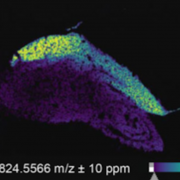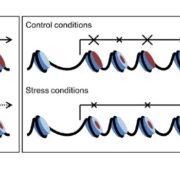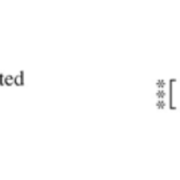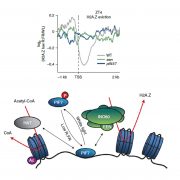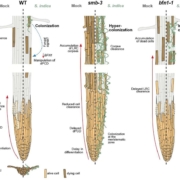Leaf age dictates abiotic versus biotic stress signalling in Arabidopsis (PNAS)
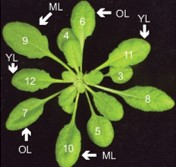 Plants sense and respond to various external stimuli throughout their lifespan. During stress responses brought forth by abiotic or biotic factors, molecular and physiological adjustments mediated by distinct yet interconnected hormone pathways play critical roles in plant survival. Berens et al. investigate how leaves of the Arabidopsis rosette prioritize stress signalling outputs during combined or sequential abiotic and biotic stress treatments. The authors uncover a differential and antagonistic prioritization of abscisic acid (ABA)-mediated abiotic stress signalling versus salicylic acid (SA)-mediated biotic signalling in older leaves of the rosette. Transcriptomic and directed expression studies further expanded on this paradigm, revealing strong ABA-mediated suppression of SA-dependent immune signalling in older Arabidopsis leaves that ultimately results in increased susceptibility to the hemibiotrophic bacterial pathogen Pseudomonas syringae. By contrast, younger Arabidopsis leaves are insensitive to ABA-induced immune suppression and thus remain more resistant to infection in a manner dependent on the SA signalling and accumulation-regulating enzyme PBS3. Further phenotypic analyses demonstrate that Arabidopsis PBS3 plays critical roles in maintaining reproductive success under combined stress and in shaping the age and stress-dependent microbial communities of rosette leaves. Collectively, this work reveals new layers of complexity in the regulation of stress signalling networks that have evolved to differentially protect leaves throughout their development. (Summary by Phil Carella) Proc. Natl. Acad. Sci. USA
Plants sense and respond to various external stimuli throughout their lifespan. During stress responses brought forth by abiotic or biotic factors, molecular and physiological adjustments mediated by distinct yet interconnected hormone pathways play critical roles in plant survival. Berens et al. investigate how leaves of the Arabidopsis rosette prioritize stress signalling outputs during combined or sequential abiotic and biotic stress treatments. The authors uncover a differential and antagonistic prioritization of abscisic acid (ABA)-mediated abiotic stress signalling versus salicylic acid (SA)-mediated biotic signalling in older leaves of the rosette. Transcriptomic and directed expression studies further expanded on this paradigm, revealing strong ABA-mediated suppression of SA-dependent immune signalling in older Arabidopsis leaves that ultimately results in increased susceptibility to the hemibiotrophic bacterial pathogen Pseudomonas syringae. By contrast, younger Arabidopsis leaves are insensitive to ABA-induced immune suppression and thus remain more resistant to infection in a manner dependent on the SA signalling and accumulation-regulating enzyme PBS3. Further phenotypic analyses demonstrate that Arabidopsis PBS3 plays critical roles in maintaining reproductive success under combined stress and in shaping the age and stress-dependent microbial communities of rosette leaves. Collectively, this work reveals new layers of complexity in the regulation of stress signalling networks that have evolved to differentially protect leaves throughout their development. (Summary by Phil Carella) Proc. Natl. Acad. Sci. USA


